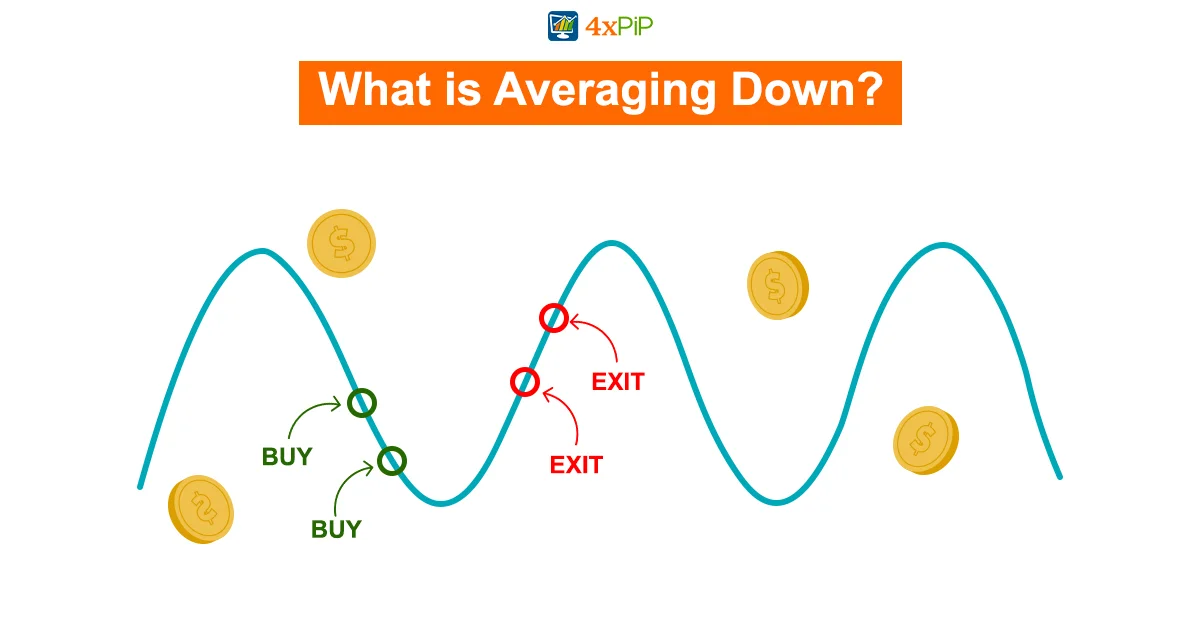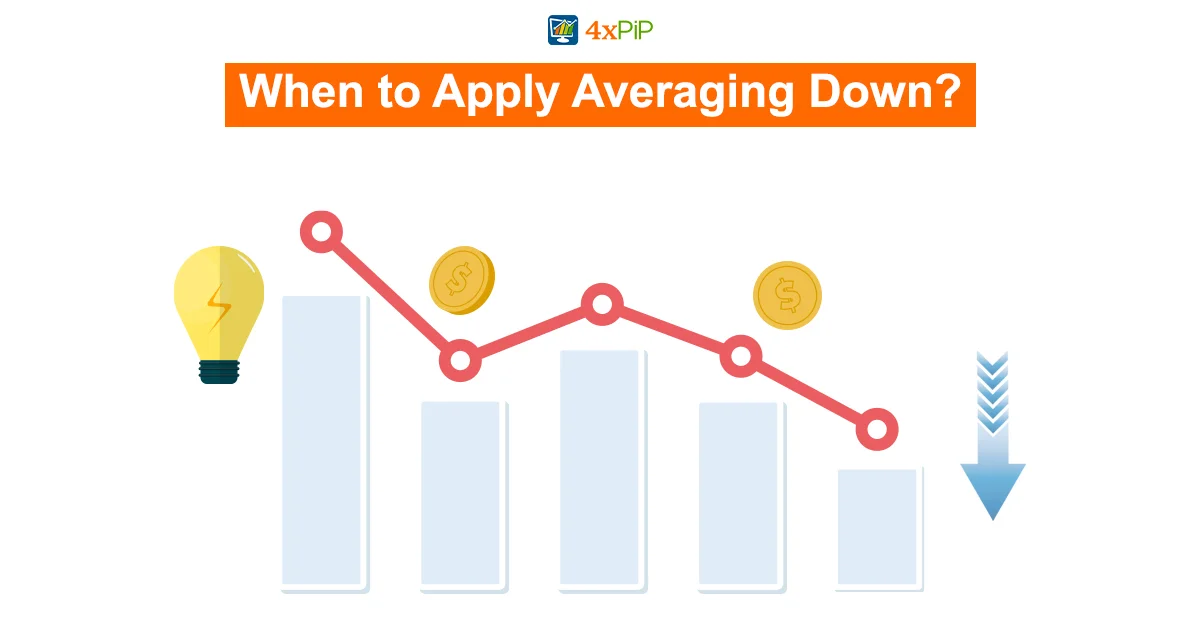In the dynamic and ever-evolving landscape of stock trading, understanding and implementing effective strategies is key to success. At 4xPip, we are committed to providing valuable insights to our readers. Whether you are a seasoned investor or just stepping into the world of trading, our experts at [email protected] are ready to guide you through the intricacies of strategies like averaging down.
What Is Averaging Down?

Averaging down, also known as “buying the dip,” is a move used by investors to improve their positions in a stock. This means buying more shares at a lower price than what you initially paid, which brings down the average cost per share. For example, if you bought 100 shares of a stock at $20 each, and later the price drops to $10, if you buy another 100 shares, the average cost per share becomes $15.
Even though averaging down seems like a good way to get a better deal, it’s important to be careful. It might look simple to lower the average cost, but there are risks. In the example, although the average cost per share goes down, the total loss on the first 100 shares doesn’t change. It’s crucial to understand the details of averaging down to avoid potential problems.
Misconceptions and make informed decisions in the dynamic landscape of stock trading.
When to Apply Averaging Down?

Deciding when to use averaging down means looking closely at a stock’s basics. It might be smart to buy more shares if the market’s reaction seems too big, and the stock’s drop looks like it’s more than it should be. The tricky part is knowing when a small drop is just temporary or the start of a bigger decline. The experts at 4xPip are here to help you with useful advice in making these tough decisions.
Averaging Down vs. Dollar-Cost Averaging (DCA)
In the world of buying and selling stocks, there are two main strategies: averaging down and Dollar-Cost Averaging (DCA). Each strategy has its own way of looking at investing, and they’re different even though they both involve buying stocks regularly.
Averaging down is about making the most of opportunities when the stock market is not doing well. It means buying more shares when prices are low. People who like to think long-term and stick to certain principles often prefer this strategy. The goal is to take advantage of temporary changes in the market, so investors can get more shares at lower prices and bring down the average cost per share.
On the other hand, Dollar-Cost Averaging (DCA) is a more organized approach. With this strategy, people buy stocks regularly, no matter what the market is like. It’s a disciplined method where investors put a fixed amount of money into stocks at set times. This helps reduce the impact of the market going up and down on their overall investment.
It’s really important for investors to know the differences between these strategies so they can make smart decisions. Averaging down is when you take advantage of lower market prices, good for people thinking long-term. On the other hand, Dollar Cost Averaging (DCA) is about regularly putting in money to reduce the effects of short-term market changes. Understanding these distinctions helps investors match their strategies with their money goals and how much risk they’re comfortable with.
When Is Averaging Down a Good Idea?
If you believe a stock will do well in the long run, averaging down can be a good strategy. This means buying more shares as the stock price goes lower. It can increase your chances of making more money. But, it’s important to know that it comes with risks. If the stock keeps dropping, having more shares could mean bigger losses. So, it’s crucial to make smart decisions when the market goes up and down.
Can You Lose Money Averaging Down?
Indeed. Holding a larger position at a loss will occur if the stock continues to decline without showing any signs of recovery. This emphasizes how important it is to make strategic decisions when dealing with shifting market conditions.
Averaging Up:
In contrast to averaging down, averaging up involves purchasing more shares as a stock rises. While this increases the average purchase price, it can amplify returns in an upward trend. However, caution is warranted, as larger losses may occur if the stock sharply falls from its peak.
Conclusion
Averaging down is a delicate strategy that demands a deep understanding of market dynamics. At 4xPip, our commitment is to empower traders with comprehensive knowledge. Explore our range of products and robots for auto trading at 4xPip. For personalized guidance tailored to your unique circumstances, do not hesitate to contact our experts at [email protected].
By embracing informed strategies and leveraging expert advice, traders can navigate the complexities of averaging down and enhance their potential for long-term success in the stock market. Whether you are considering averaging down or exploring alternative strategies, our team at 4xPip is here to support your journey towards financial growth and trading mastery.
FAQ’s
What is Averaging Down in Stock Trading?
Averaging down refers to buying more shares at a lower price to reduce the overall average cost.
When Should I Apply Averaging Down?
Apply averaging down cautiously after evaluating the stock’s fundamentals and market reactions to ensure informed decisions.
How Does Averaging Down Differ from Dollar-Cost Averaging?
Averaging down focuses on buying during market dips, while dollar-cost averaging spreads purchases evenly over time.
Is Averaging Down Considered a Value-Oriented Strategy?
Yes, averaging down is generally viewed as a value-oriented strategy in long-term investing.
Can You Lose Money Averaging Down?
Yes, continuous decline without recovery can lead to holding a larger position at a loss.
What’s the Difference Between Averaging Down and Averaging Up?
Averaging down involves buying more as the stock falls, while averaging up means buying more as it rises.
When Is Averaging Down a Good Idea?
Averaging down works best when you have confidence in the stock’s long-term potential.
How Does Averaging Down Amplify Profit Potential?
Accumulating shares at progressively lower prices enhances profit potential in the long run.
Are There Risks in Averaging Down Without Strategic Decision-Making?
Yes, inexperienced investors may struggle to distinguish between a temporary dip and a warning signal.
Where Can I Find Expert Guidance on Averaging Down and Other Strategies?
For expert guidance and a range of trading tools, explore 4xPip or contact our experts at [email protected].





